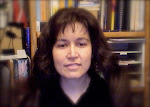Ok, maybe big deal. Right at the beginning Dave Allen talks about a key thing that is so important and obvious that you can totally miss it. So you have something you want to get done. What does "done" look like. Define it, write it down.
It is so easy to get caught up in projects and sub-projects and tasks that the goal you are aiming for, the outcome, can get lost.
For example. I want to start an podcast (as in the formal thing that you can subscribe to). Outcome - regularly produce video content that people can subscribe to. But the thing is I'm into so many different things I wasn't sure what particular topic to do my podcast on - so action define topic. Not a bad action but over time (weeks) you have to ask is it leading to outcome or just holding things up.
Last week I was talking with someone who talked about how she is into lots of things and she tried out different topics as podcasts and them moved on if it didn't work for her. What a great idea. Sure eventually I'll want to find the topic/niche but if the answer isn't forthcoming making various podcasts to find the niche that works for me may get me to my outcome a whole lot faster.
If I was tied to just the actions - well I haven't found my topic, can't move on. But by focusing on the outcome - what done looks like - I can say - wait this next action isn't getting me where I need to go - time to rethink.
So I'm very glad that I had that reading assignment, and I've already benefited from the reading.
And before I go one more thought that was inspired by RJ Moriarty's comment on my previous post.
On first blush GTD seems to expect you to have considerable physical space - the mega inbox and filing. But for those of us who are online/with computer folks a lot of this physical stuff can be moved to on the computer. (See this lifehacker post on the paperless home.) Yes, mail comes in and there is some paper to use, but you can scan in needed documents, and most of my inbox I send to myself in mail. More space than what you have about your desk isn't absolutely necessary.
As far as the contexts (that is where you do a particular task) well that isn't necessarily about place. "On my Mac" can be anywhere my Mac is. And a lot of my contexts are actually hats. When I'm at my computer I can be doing work for my job, doing SL projects, doing non-profit activities and other stuff too. With lots of "bosses" so to speak I do focus blocks - right now I'm @ work, right now I'm @ the non-profit, etc., so even though I'm in the same physical space I'm in different contexts. But really, you only need as many contexts as are useful for you. "Out in the world", "at work", and "at home" may be enough depending on what you do and how you work.


No comments:
Post a Comment